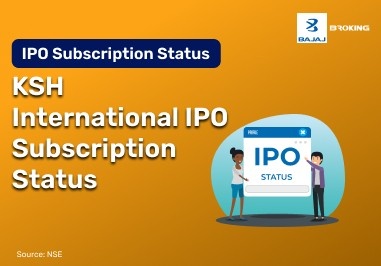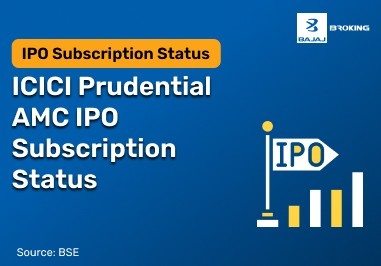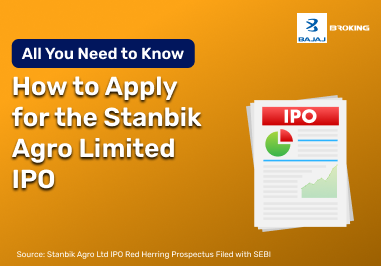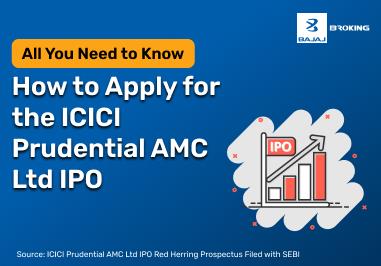Companies may acquire treasury stock through buyback programs, often using funds from retained earnings or proceeds generated through margin trading facility (MTF). While these shares do not carry voting rights or earn dividends, they can be reissued later to raise capital or compensate employees. Investors monitoring stock buybacks often assess their impact on intraday trading trends and broader market movements.
What is Treasury Stock?
Treasury stock, also known as reacquired stock, refers to shares that were once issued by a company but have since been bought back from the open market or existing shareholders. These shares are not considered part of the company’s outstanding stock and do not carry voting rights or dividend entitlements. Instead, they are held in the company’s treasury and recorded as a deduction from shareholders’ equity on the balance sheet. Unlike newly issued shares, treasury stock does not generate additional capital for the company but serves specific strategic and financial purposes.
Companies repurchase shares for various reasons, including influencing stock prices, consolidating ownership, or improving financial metrics such as earnings per share (EPS). The repurchased shares can be reissued in the future for raising capital, employee stock compensation, or funding acquisitions. However, if the company decides to retire them permanently, they will be removed from circulation, reducing the total number of outstanding shares. This financial maneuver is governed by regulatory frameworks, ensuring transparency and shareholder protection.
Understanding Where Treasury Stocks Come From
Treasury stocks originate from shares that were initially issued by a company and later repurchased. When a company goes public, it issues shares to investors, making them publicly traded. Over time, companies may choose to reacquire some of these shares through open market purchases, employee stock option plans (ESOPs), or structured buyback programs. Once repurchased, these shares are no longer part of the outstanding shares available for trading. Instead, they are held in the company’s treasury and recorded as contra-equity on the balance sheet.
These stocks are distinct from permanently retired shares. While retired shares are removed from circulation entirely, treasury stocks remain in the company’s control for potential future use. Companies may reissue these shares for various purposes, such as raising capital, fulfilling stock-based employee compensation plans, or supporting corporate restructuring efforts. However, while held as treasury stock, these shares do not carry voting rights, receive dividends, or contribute to earnings per share (EPS) calculations.
Objectives Behind Treasury Stock Acquisition
- Increasing Stock Prices – Reducing the number of publicly available shares can drive up demand, potentially increasing the stock price.
- Preventing Hostile Takeovers – By repurchasing shares, a company limits their availability in the market, making it harder for external entities to gain controlling interest.
- Employee Compensation via ESOPs – Treasury shares can be used for stock-based compensation plans, offering incentives to employees without issuing new shares.
- Providing Liquidity for Shareholders – A buyback program allows existing shareholders to sell their shares back to the company, providing liquidity when needed.
- Capital Restructuring – Companies use treasury stock to optimize their capital structure, adjusting the debt-to-equity ratio for financial stability.
- Future Reissuance – Treasury shares may be held for later reissuance to raise funds, support mergers, or facilitate corporate acquisitions.
Methods Companies Use to Buy Back Stocks
A stock buyback is a strategy used by companies to repurchase their own shares from the market, reducing the number of outstanding shares in circulation. This approach allows companies to manage ownership distribution, optimize financial ratios, and utilize treasury shares for strategic purposes. Below are the primary methods companies use to execute stock buybacks:
- Tender Offer
A company announces a formal offer to repurchase shares directly from existing shareholders at a predetermined price. This price is typically set at a premium to the current market value. The offer remains valid for a specified period, during which shareholders can choose to tender their shares for buyback. Once accepted, the company reacquires the shares, reducing the total number of publicly traded shares. - Open Market Operation
Also known as a market-based repurchase, this method involves the company gradually buying back shares from the stock exchange at prevailing market prices. Unlike a tender offer, there is no set premium or fixed price. The company repurchases shares as per its financial strategy, often depending on market conditions and available capital. These repurchases can influence investor sentiment and may lead to price fluctuations. - Dutch Auction
In this method, the company specifies a price range at which it is willing to repurchase shares. Interested shareholders submit offers, specifying the price at which they are willing to sell their holdings within the given range. After collecting responses, the company determines the lowest price at which it can acquire the required number of shares. This allows for greater flexibility compared to a standard tender offer and helps companies optimize the cost of repurchase.
An existing shareholder who wishes to participate in a buyback may offer their shares at a chosen price within the company's predefined range. Once the company evaluates all submissions, it purchases the required shares at the most cost-effective rate. Investors monitoring buyback activity often consider its impact on intraday trading, especially in relation to market trends like BSE Sensex and Nifty 50 Price movements.
Rationale Behind Share Repurchases
Following are some of the reasons why a company may decide to repurchase its shares from its shareholders:
- Enhancing Share Value
When a company buys back its own shares, the reduced supply in the market can lead to an increase in stock price. Investors tracking Nifty 50 Price and BSE Sensex often monitor share repurchases for potential price movements. - Strengthening Ownership Control
Reducing the number of outstanding shares increases the percentage holding of existing shareholders. This move also acts as a safeguard against hostile takeovers, ensuring that control remains within the company's intended structure. - Optimizing Capital Structure
Companies use buybacks to balance debt and equity levels, adjusting financial ratios for long-term stability. Share repurchases can be strategically aligned with corporate funding needs or surplus cash allocation. - Utilization for Employee Benefits
Treasury stocks may be reissued as part of stock-based employee compensation plans, such as margin trading facility (MTF)-backed incentives or performance-based stock options. This method helps retain key talent without further diluting shareholder value. - Financial Flexibility
Holding treasury shares gives a company the flexibility to reissue them in the future for fundraising, acquisitions, or capital restructuring. Unlike permanently retired shares, these stocks can serve as a reserve for strategic corporate decisions.
Limitations of Treasury Stock
- Does not grant shareholders voting privileges
- Cannot earn dividends from company profits
- Excluded when calculating the total number of shares in circulation
- Does not allow holders to maintain proportional ownership right
- Holds no claim to company assets in case of liquidation
- Subject to regulatory limits in certain markets to prevent excessive accumulation by companies
Treasury Stock Formula
- Purpose – The treasury stock formula is used to calculate the number of additional shares that may impact earnings per share (EPS) due to exercised stock options and warrants.
- Formula Representation – The calculation follows:
Additional shares outstanding = n × (1 – K / P) - Components of the Formula:
- n – Number of shares from exercised options and warrants
- K – Average exercise price (strike price) of the options or warrants
- P – Average market price of the stock during the reporting period
- Impact on Financials – This formula helps companies and investors assess how stock dilution affects EPS and shareholder value.
- Application in Financial Reporting – The method is widely used in corporate accounting to evaluate potential changes in outstanding shares and earnings distribution.
What is the Treasury Stock Method?
The treasury stock method is a calculation used to assess the potential dilution of earnings per share (EPS) due to outstanding stock options and warrants. This method assumes that when these securities are exercised, the proceeds generated are used to repurchase shares at the prevailing market price. Investors tracking Nifty 50 Price and BSE Sensex often consider EPS dilution when evaluating a company's stock performance. Since share buybacks influence financial ratios, companies strategically use this method to manage equity dilution while maintaining shareholder value.
In financial reporting, the treasury stock method helps determine the net additional shares that affect diluted EPS calculations. The formula considers the number of exercised options, their strike price, and the average stock price during the reporting period. Traders utilizing futures and options or engaging in intraday trading monitor such corporate actions closely, as they can impact market volatility. Regulatory guidelines mandate that companies include this method in disclosures, ensuring transparency for investors who may wish to invest in bonds or invest in mutual fund schemes based on stable earnings metrics.
Features of Treasury Stocks in India
- No Voting Rights – Treasury shares do not grant shareholders any voting privileges in corporate decisions.
- No Dividend Entitlement – Since these shares are held by the company, they do not receive dividends.
- Excluded from EPS Calculation – Treasury stocks are not considered when calculating earnings per share (EPS), which can make outstanding shares appear more valuable.
- Recorded as Contra-Equity – These shares are listed as a deduction from shareholders’ equity on the balance sheet rather than as an asset.
- Not Actively Traded – Treasury stocks are not available for intraday trading or transactions through a trading account online.
- Strategic Corporate Use – Companies may retain treasury shares for future reissuance, employee stock option plans (ESOPs), or capital restructuring.
- Regulated by SEBI – The Securities and Exchange Board of India (SEBI) sets guidelines for buybacks and treasury stock management to ensure market stability.
- Potential for Reissuance – Unlike retired shares, treasury stocks can be resold in the future, helping companies raise capital when needed.
Treasury Stock vs. Common Stock
The table below highlights the key differences between treasury stock and common stock, ensuring clarity for investors and market participants.
Feature
| Treasury Stock
| Common Stock
|
Ownership Rights
| Held by the company; not owned by public investors
| Owned by shareholders who have voting rights
|
Voting Rights
| No voting rights
| Grants shareholders voting rights
|
Dividend Eligibility
| Not entitled to receive dividends
| Eligible for dividend payouts
|
Trading Availability
| Cannot be traded in the open market
| Traded freely on stock exchanges
|
Impact on EPS
| Excluded from EPS calculations
| Included in EPS calculations
|
Balance Sheet Treatment
| Recorded as a contra-equity item
| Part of shareholders' equity
|
Market Influence
| Does not contribute to BSE Sensex or Nifty 50 Price movements
| Affects stock market indices based on demand and supply
|
Usage by Companies
| Used for employee stock plans, capital restructuring, or reissuance
| Used for raising capital and public investment
|
Regulatory Oversight
| Subject to SEBI regulations on buybacks and treasury stock limits
| Issuance and trading regulated by stock exchanges and SEBI
|
This comparison ensures investors and traders—whether engaging in intraday trading, futures and options, or long-term investments—can differentiate between these two stock categories when making financial decisions.
Things to Keep in Mind Before Buying Treasury Stocks in India
- Company’s Financial Health – Assess the company's financial stability and performance before considering its stock repurchase actions.
- Purpose of Buyback – Understand why the company is repurchasing shares—whether for capital restructuring, stock-based compensation, or defending against takeovers.
- Regulatory Compliance – Ensure the buyback adheres to SEBI regulations, which govern share repurchase limits and disclosure requirements.
- Market Valuation – Compare the buyback price with the prevailing market value to determine if the repurchase is at a fair price.
- Impact on EPS – Since treasury stock reduces outstanding shares, it may increase earnings per share (EPS), affecting stock valuation.
- Liquidity Considerations – Treasury stock buybacks reduce the number of publicly available shares, potentially affecting liquidity in intraday trading.
- Long-Term Investment Goals – Investors should evaluate whether the buyback aligns with their financial objectives, such as capital appreciation or dividend income.
- Tax Implications – Consider any tax liabilities associated with capital gains from buybacks compared to dividends when deciding whether to invest in bonds or invest in mutual fund alternatives.
- Market Conditions – Analyze broader stock market trends, including BSE Sensex and Nifty 50 Price movements, to determine if buybacks indicate positive growth signals or financial distress.
- Exit Strategy – Develop a plan for selling shares post-buyback, especially if engaging in futures and options or leveraging margin trading facility (MTF) for investments.
How to Invest in Treasury Stocks in India?
- Through Stock Exchanges – Investors can indirectly gain exposure to treasury stocks by tracking companies listed on BSE Sensex and Nifty 50 Price that engage in share buybacks.
- Via Primary Dealers and Banks – Certain financial institutions facilitate investment in corporate securities, including stocks affected by buyback programs.
- Retail Direct Gilt Accounts – Investors can explore government-backed platforms offering securities and buyback-related instruments.
- Mutual Funds and ETFs – Some funds allocate capital to companies that actively manage treasury stock, allowing investors to invest in mutual fund schemes with such exposure.
- Brokerage Firms – Using a trading account online, investors can monitor companies with ongoing buyback programs to assess potential investment opportunities.
- Margin Trading Facility (MTF) – Investors looking for leveraged positions can use MTF trading to participate in stocks undergoing buybacks while managing capital efficiently.
- Online Investment Platforms – Many apps and websites provide research tools to track companies repurchasing shares, aiding informed investment decisions.
- Government Securities and Bonds – Some companies engage in treasury stock buybacks while also issuing corporate bonds, offering investors an opportunity to invest in bonds for diversified exposure.
- Market Analysis and Reports – Staying updated with SEBI guidelines, earnings reports, and corporate announcements helps investors evaluate stock repurchase trends.
- Professional Advisory Services – Investors can consult financial advisors to assess risk factors and portfolio strategies related to companies conducting stock buybacks.
Conclusion
Treasury stock plays a significant role in corporate financial management, allowing companies to repurchase shares for strategic purposes. These shares are held in the company’s treasury and are not publicly traded, nor do they carry voting rights or dividend entitlements. By reducing the number of outstanding shares, companies can influence stock prices, adjust capital structures, and enhance earnings per share (EPS). Investors tracking market movements, including BSE Sensex and Nifty 50 Price, often analyze buyback trends to assess their potential impact on stock performance.
For investors, understanding treasury stock buybacks is crucial when making informed financial decisions. Whether through direct equity exposure, investing in bonds, or opting to invest in mutual fund schemes that hold buyback-driven stocks, analyzing the financial health and purpose behind such acquisitions is essential. Additionally, traders engaging in intraday trading, futures and options, or using margin trading facility (MTF) must evaluate buyback effects on liquidity and price fluctuations. Proper research and market awareness are key to leveraging treasury stock movements effectively.
Do you have a trading account app or demat account app?
You can open an account with Bajaj Broking in minutes.
Download the Bajaj Broking app now from Play Store or App Store.
Disclaimer: Investments in the securities market are subject to market risk, read all related documents carefully before investing.
This content is for educational purposes only. Securities quoted are exemplary and not recommendatory.
For All Disclaimers Click Here: https://www.bajajbroking.in/disclaimer














